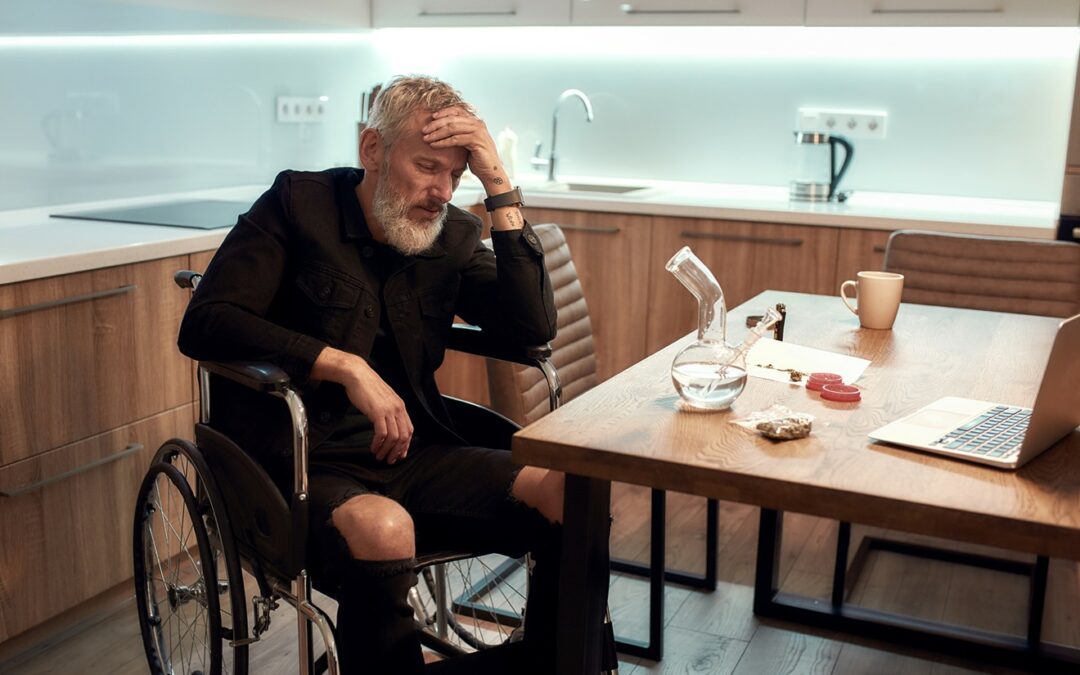Veronica Santarelli is the CEO of cannabis-delivery Grassp Health, where an estimated 30 to 40 percent of the company’s clientele are seniors, spread across hundreds of facilities throughout Arizona.
“There is a huge misconception about using cannabis in long-term care,” Santarelli said. “I would see families sneaking gummies into assisted living facilities, and I would say, ‘You know, you don’t have to do that.’”
Santarelli firmly believes marijuana should be a normalized health care option. Arizona’s relevant law, ARS 36-2805, allows for the administration of medicinal marijuana and marijuana-derived medications to registered and qualified patients in licensed assisted living facilities. Just like any medication, this requires a doctor’s order.
But finding a doctor willing to give the order can be difficult, both in Arizona and nationwide. Santarelli said many doctors refrain from fully embracing medical marijuana out of fear of federal or Drug Enforcement Agency (DEA) repercussions.
Dr. Elaine Burns, a naturopathic physician and the medical director at Southwest Medical Marijuana Physicians Group, is unafraid. In the industry since 2011, Burns is a licensed physician with additional expertise including homeopathy, acupuncture and botanical medicine — including cannabis. An estimated 75 percent of her patients are senior citizens.
“A lot of mainstream physicians refer their patients to me,” Burns said, regarding marijuana prescriptions. “My goal is to help people get better with the medicine, not just to get a card.”
Burns works with individual patients to prescribe the proper dosage and type. One of the first things she asks new patients is whether they reside in a facility that permits marijuana. When it comes to such communities, there is no generalized plan.
“It is facility-dependent,” Burns said. “Some might be willing to allow CBD, since it is legal at the federal level, versus actually having a full-blown card.”

Arizona’s law outlines four ways in which assisted living facilities may “reasonably restrict” medical marijuana consumption. The law states that they will not store or maintain the patient’s supply of marijuana and are not responsible for providing the marijuana for qualifying patients. The law further stipulates that marijuana must be consumed by a method other than smoking and only in a place specified by the facility.
While this would still allow patients to consume, the necessity of a non-facility-affiliated caretaker to store and administer doses is often prohibitive.
For one woman, medical marijuana is a desperate option to help alleviate her mother’s extreme pain and anxiety. She declined to be identified out of concern it might lead to animosity toward her mother residing there. Despite much back and forth with the facility, regulators, and doctors, the facility refuses to store and administer marijuana to the woman’s mother. As a result, the only remaining options are to hire outside caretakers, move closer to the parent to administer directly themselves, or to opt for a more traditional prescription like opiates.
“Their policy is that somebody, not one of their employees, is responsible for bringing the marijuana to the patient, watching them take it, and removing from the premises anything that is not consumed,” she said. “The doctor recommended medicinal marijuana three to four times a day. That’s pretty much impossible.”
She added that despite many pleas to provide her parent with marijuana for debilitating anxiety and pain, the facility only repeated they are “just not comfortable with it.”
“Their arguments indicated to me that they just didn’t understand,” she said. “I think part of the problem is there is a lot of vagueness in this statute.”
Shane Pennington, a New York-based attorney focused on federal appeals and regulatory issues related to cannabis, also finds ARS 36-2805 confusingly vague.
“You can’t do anything unreasonable unless it jeopardizes funding under federal law or regulations?” Pennington said. “Then, I guess, you can do unreasonable restrictions.”
Arizona law does not require assisted living facilities to administer medical marijuana if doing so would harm the facility under federal law. And while such harm is very unlikely, the conflict between state and federal marijuana legislation creates confusion and uncertainty.
For example, Pennington noted that assisted living facilities are federally required to register with the DEA to dispense legal controlled substances, like opioid painkillers.
Medicinal marijuana — while legal in Arizona, 38 other states and Washington D.C. — is classified by the federal government as an illegal Schedule I drug. These substances are defined as having “no medical use,” and so distributing them could put a facility at odds with the DEA.
Pennington noted that the Department of Justice would not be able to expend resources to interfere with state implementation of medicinal marijuana legislation.
“If what you’re doing is consistent with state medical marijuana regimes, then DOJ — which includes DEA — can’t enforce against you,” Pennington said. “This is a deep problem, how confusing it gets.”
The Arizona Department of Health Services reported it is not aware of any senior living facility that embraces the use of medical marijuana. Phoenix New Times reached out to several Phoenix assisted living facilities and received response from one.
“Hospice of the Valley fully respects the wishes of any patients who wish to use cannabis medications and works collaboratively with their physicians to coordinate a safe and effective plan of care,” the response read.
Hospice of the Valley would not elaborate on whether its staff would administer the cannabis medication.
The popularity and acceptance of marijuana-derived treatments for the effects of aging is growing, as more seniors question the merits of traditional pharmaceuticals, with their sometimes harsh side effects. Research promises relief for senior citizens when it comes to such conditions as pain, poor sleep, and Alzheimer’s.
“For 12 years, I’ve seen people get off opioids, fentanyl, morphine, sleep aids. They basically take their medicine cabinet full of amber plastic prescription bottles and put their one or two cannabis medicines on the shelf,” said Burns.
For glaucoma patients, Burns finds that supplementing traditional medications with marijuana improves pressure levels. Cancer patients are better able to tolerate chemotherapy and radiation. Migraine sufferers report huge reductions in both frequency and intensity. And all have a better quality of life.
The Arizona Department of Health Services, which issues medical use licenses but does not maintain data on how many assisted living facilities are licensed, outlines the legally-approved conditions for medical marijuana use. While this includes glaucoma, cancer and “agitation of Alzheimer’s disease,” it does not explicitly include migraines or sleeplessness. These are symptoms common with the elderly that Burns finds marijuana eases.
Santarelli and Burns cite particularly good benefits for Alzheimer’s patients in living facilities, including a calming effect that replaces sedatives that would otherwise leave patients nearly comatose. In one instance, Santarelli recalls a woman suffering from Alzheimer’s who was so agitated she could not be contained. She was kicked out of several living facilities before implementing medical marijuana into her routine. This calmed her and allowed her to live out the rest of her life in one residence.
“These are people in hospitals and nursing homes, in many cases it is veterans,” Pennington said. “There’s a federal prohibition, and the lack of Congress to bring clarity to all of this has everybody guessing. It has real impact on people.”





Recent Comments